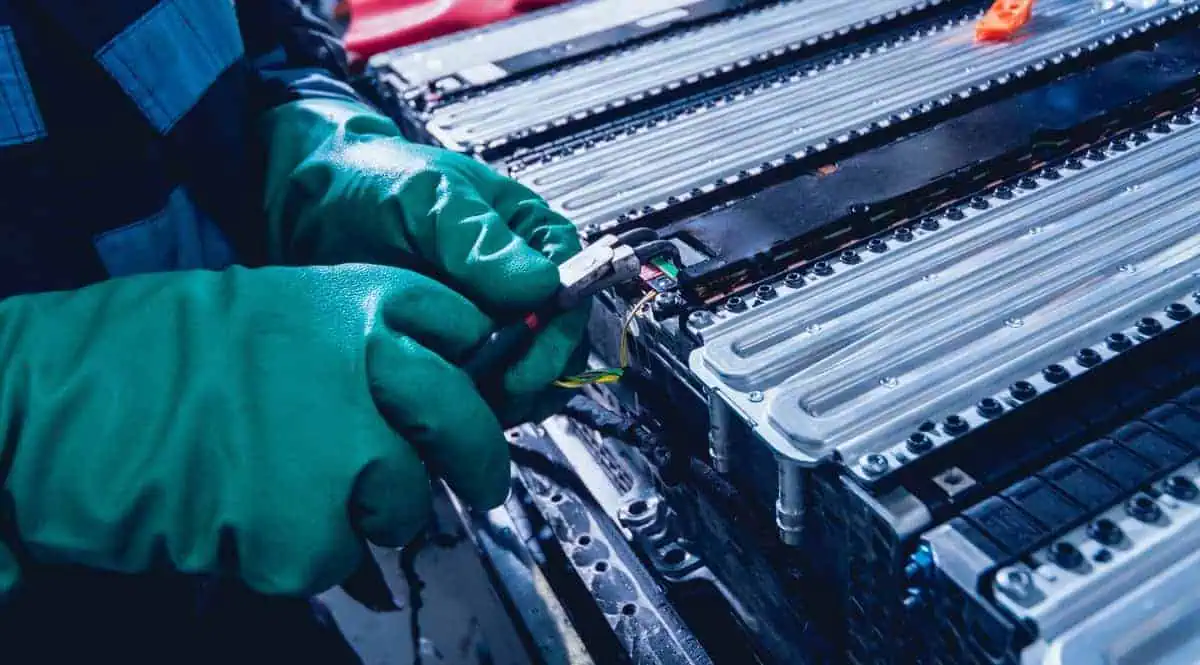Leading EV battery manufacturer Envision AESC seeks to boost manufacturing capacity to 70 GWh in the United States and over 300 GWh globally. Now, it has officially announced plans for a second massive electric vehicle battery gigafactory in the country this year, as per InsideEVs.
Envision AESC investments in battery manufacturing plants
Envision AESC recently invested in a 30 GWh battery plant in South Carolina specifically intended to build cylindrical li-ion battery cells for BMW’s Plant Spartanburg. Notably, these are reported to be the sixth-generation battery cells of BMW with an average diameter of 46 mm.
CEO Shoichi Matsumoto said in a statement: “We are delighted to partner with BMW Group as part of the next stage of growth of our US business. Our new [South Carolina] plant will harness [the latest] technology to create denser, lighter, and more powerful batteries that travel further without the need to charge.
Envision AESC states that the company is now striving to choose a suitable location adjacent to the BMW Group’s vehicle and battery production facilities.
The current priority of the company is the new South Carolina factory. It will be followed by the Kentucky factory, which was announced in April 2022. Although there is a potential for 40 GWh/year, the factory in Kentucky is also expected to produce 30 GWh annually.
Additionally, Envision AESC maintains a minor factory at the Nissan production site in Smyrna, Tennessee. It is reported to produce only 3.0 GWh annually.
Global expansion
The following new plants are part of Envision AESC’s rapid expansion of its production capacities:
- Japan (up to 18 GWh/year)
- UK (up to 38 GWh/year)
- France (30 GWh/year “or more” by 2029)
- Spain (up to 50 GWh/year)
- China (a few plants)
Overall, these projects show that the AESC (formerly owned by Nissan’s JV) is growing significantly under the Chinese Envision Group.
Based on EnergyTrend’s data, here is a brief breakdown of Envision AESC manufacturing sites (annual capacity):
· Zama, Kanagawa, Japan – *2.6 GWh
Ibaraki, Japan – 6 GWh (initial target) starting in 2023, up to 18 GWh
· Sunderland, UK – *1.9 GWh
Sunderland, UK (new plant) – 11 GWh (initially in 2024) with potential for 38 GWh
· Smyrna, Tennessee, US – *3.0 GWh
Bowling Green, Warren County, Kentucky, US – 30 GWh starting in 2025 (40 GWh potential)
South Carolina, US – 30 GWh (cylindrical battery cells for BMW)
· Douai, France – 30 GWh “or more”
· Navalmoral de la Mata, Spain – up to 50 GWh, starting in 2025 (announced in July 2022)
· Wuxi, China – target 20 GWh
Ordos, China – first phase target of **10 GWh
Shiyan, China – first phase target of **20 GWh, up to **40 GWh potential
Cangzhou, China – 30 GWh starting in 2024 (announced in September 2022)
· Total: close to 300 GWh/year, assuming all at full capacity
It is not a secret that batteries are essential to electric vehicles. In order to assist the transition to electric vehicles, investments like this must be made in the production of batteries and battery plants.






